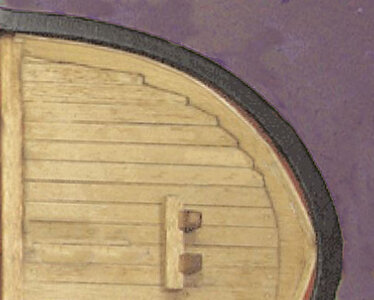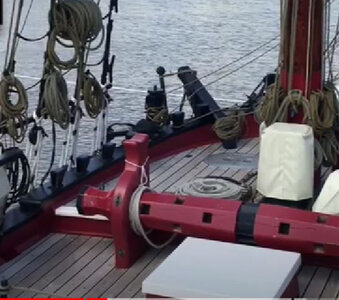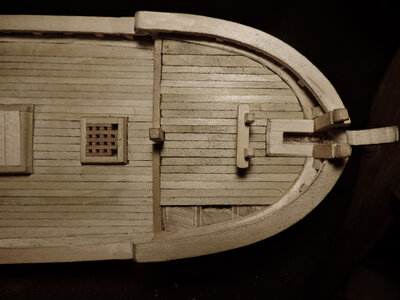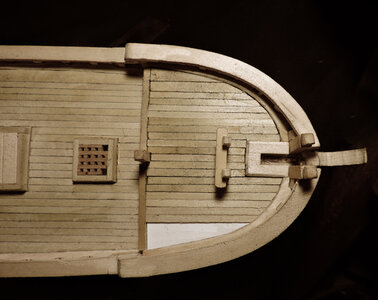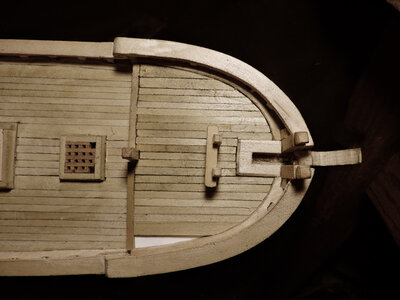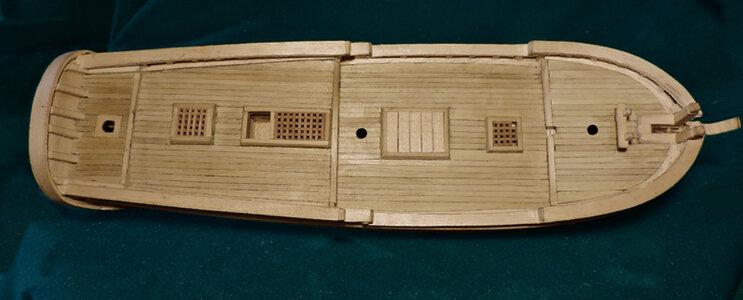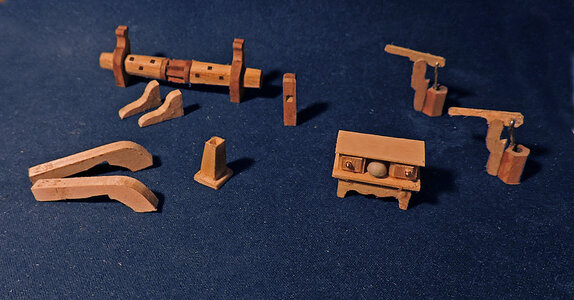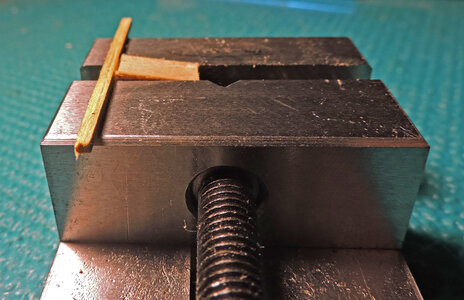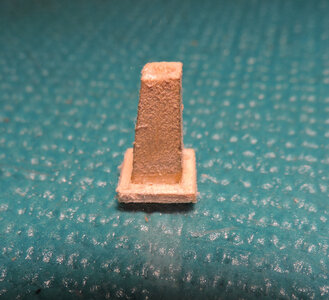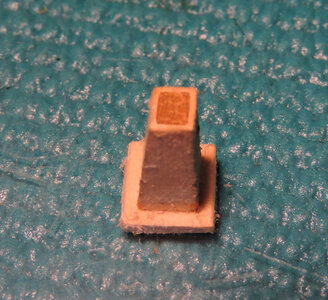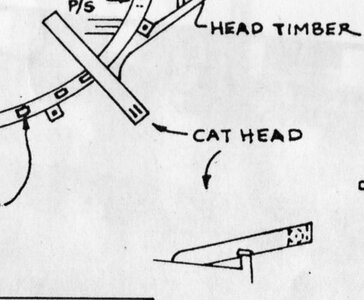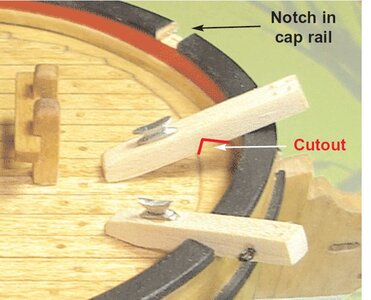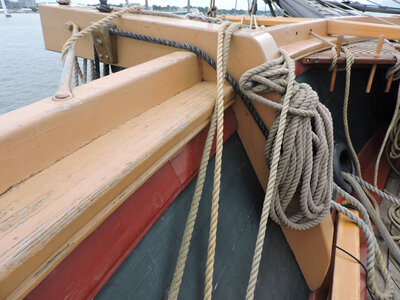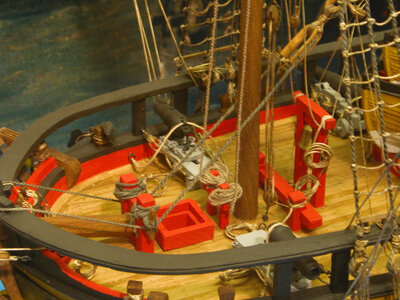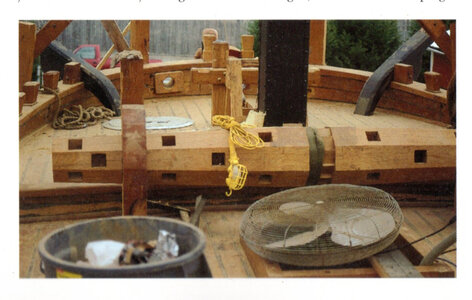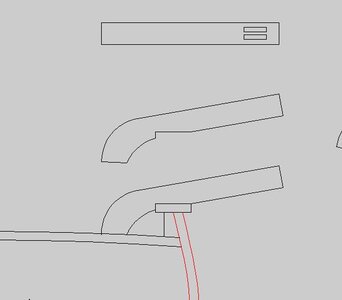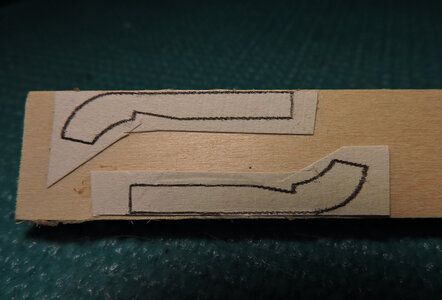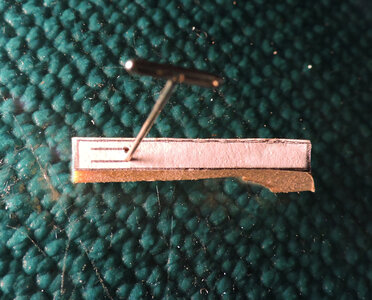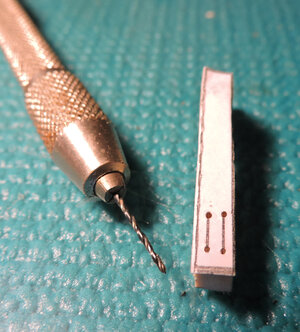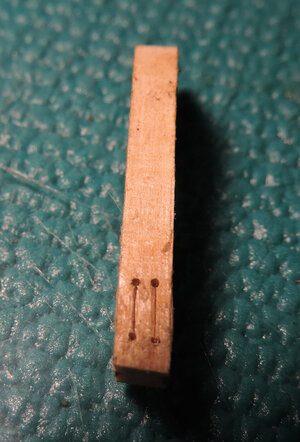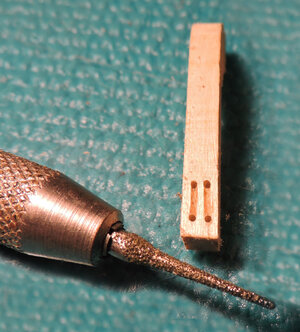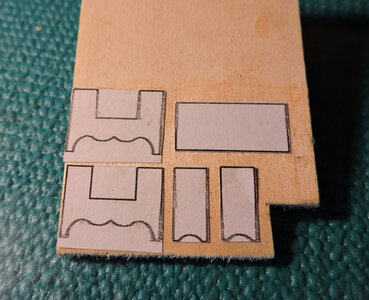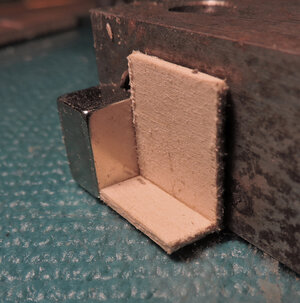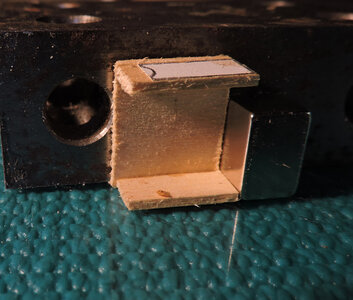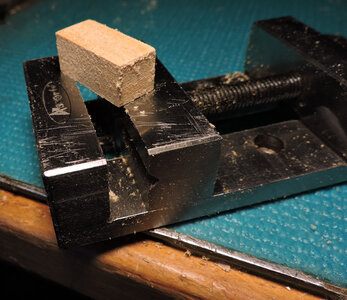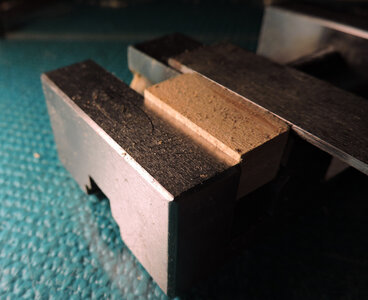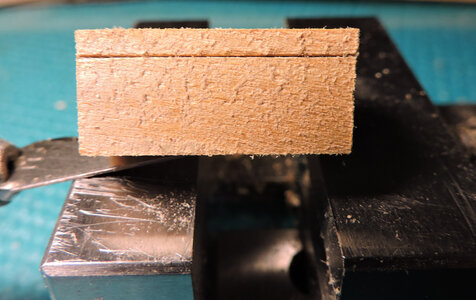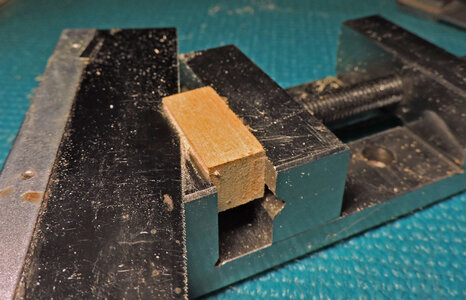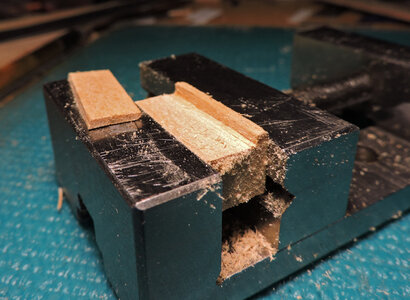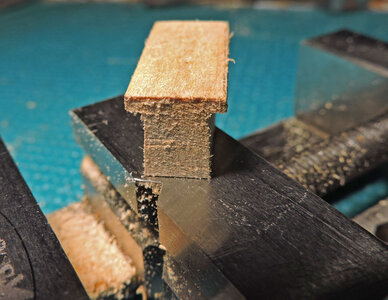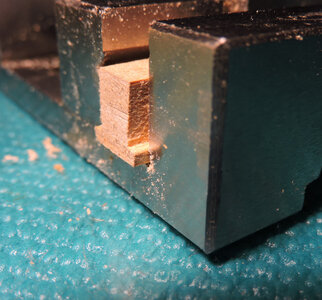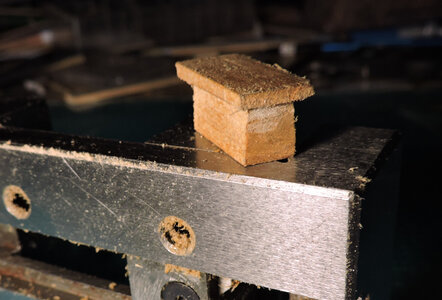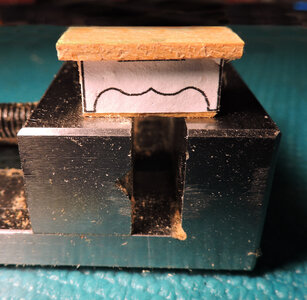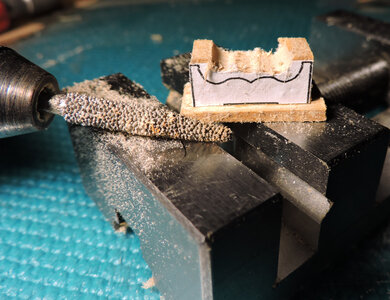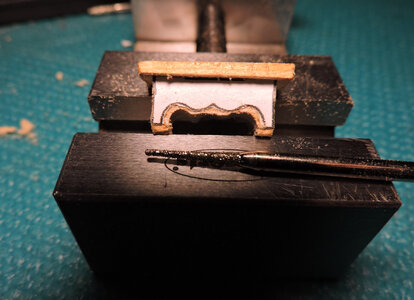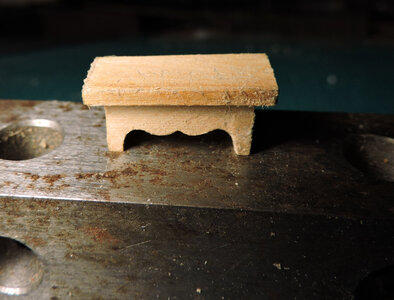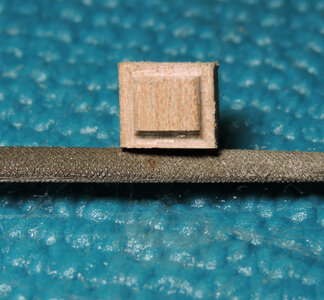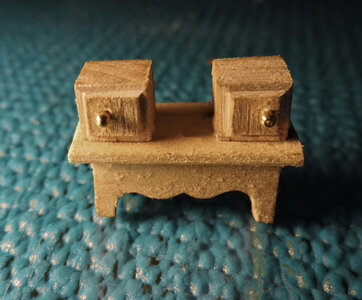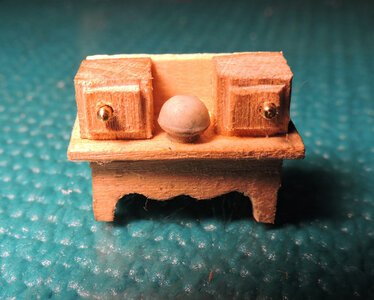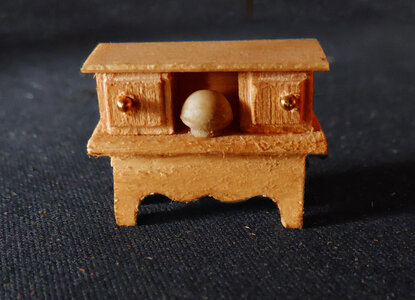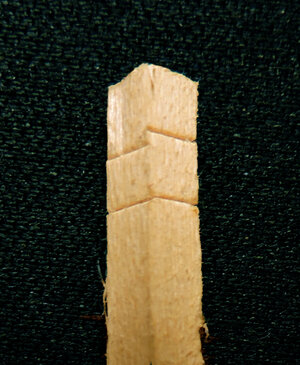- Joined
- Dec 1, 2016
- Messages
- 5,135
- Points
- 728

Before going on with the decking i built the bitts which is a straight forward piece to make. Use a piece of 1/8 square stock and cut the two posts longer than the final height from the deck. The cross rail is made from a pieces of the deck planking stock. Notches are cut in the posts and the rail. At the tops the edges have a bevel.
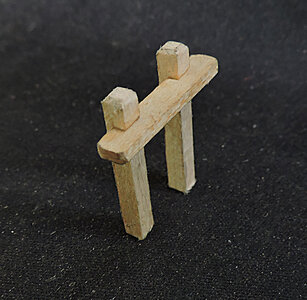
The distance the posts are apart is equal to the width of the three center deck planks. Making the space between the posts the same as the three planks avoids having to trim and fit the deck planks around the posts. To mount the bitts on the deck the extra lengh of the posts go below the deck and glue to the side of the bulkhead. To make sure the bitts are at the correct height and level i took a scrap piece of wood and trimmed it so it fit under the rail. I could use a super glue but then i have like 15 seconds to place the bitts level and at the correct height. Using a slower wood glue with the block gave me time to make sure the bitts are in correct.
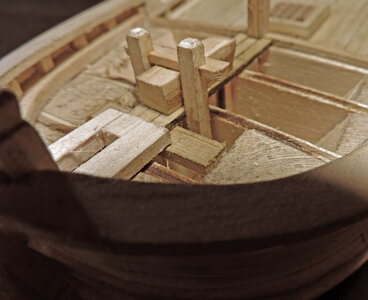

The distance the posts are apart is equal to the width of the three center deck planks. Making the space between the posts the same as the three planks avoids having to trim and fit the deck planks around the posts. To mount the bitts on the deck the extra lengh of the posts go below the deck and glue to the side of the bulkhead. To make sure the bitts are at the correct height and level i took a scrap piece of wood and trimmed it so it fit under the rail. I could use a super glue but then i have like 15 seconds to place the bitts level and at the correct height. Using a slower wood glue with the block gave me time to make sure the bitts are in correct.


